Note: This website was automatically translated, so some terms or nuances may not be completely accurate.
What is the "Future of Fashion Education" Challenging Physical × Digital? Co-creation Between Roblox and Bunka Fashion College
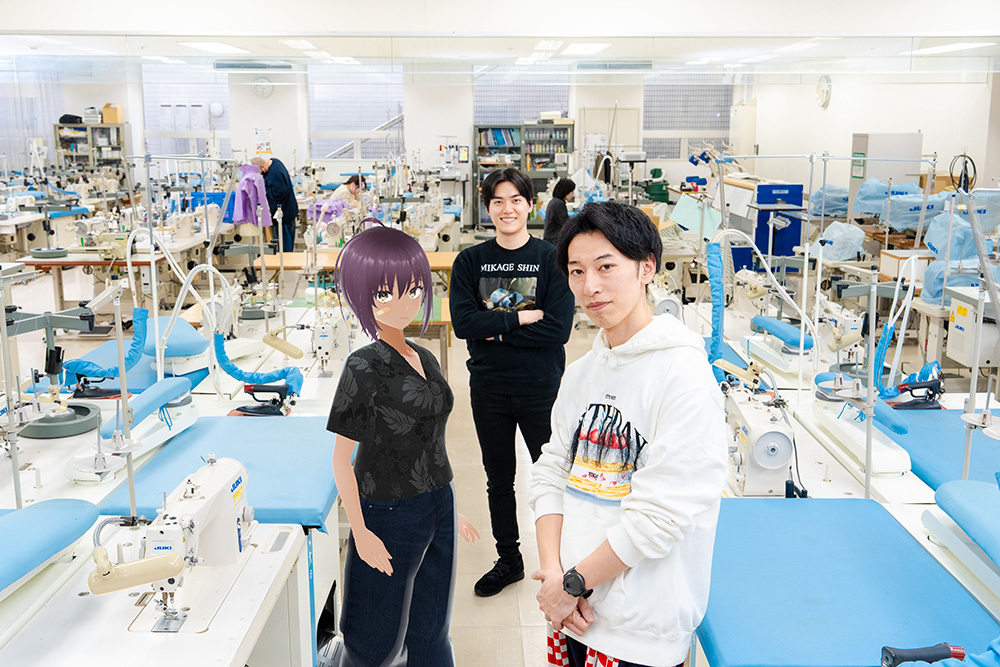
Are you aware of the rapidly growing "digital fashion" market worldwide? It's a quietly massive industry projected to reach approximately ¥16 trillion in market size by 2030.
To cultivate the next generation of talent capable of thriving in digital fashion, Bunka Fashion College—which has produced numerous world-renowned fashion designers—has newly established the "Virtual Fashion Course" starting in the 2024 academic year.
This elective course, available for transfer students in their third year, ran a five-month "Digital Fashion Program" starting in October 2024 (second semester). It was conducted in collaboration with the immersive social platform Roblox, GeekOut, and the Dentsu Group.
This time, Professor Kei Tokuoka from Bunka Fashion College, alongside co-instructors SushiPa, a 3D CG artist from GeekOut, and Shusuke Morioka from the Dentsu Group, reflect on this pioneering digital fashion program, a first-of-its-kind initiative in Japan.
<Table of Contents>
▼21 Students Mastered Both "Physical" and "Digital" Design
▼Building "My Brand" with Both Physical Clothing and Roblox Avatar Outfits
▼Will the Digital Fashion Market Grow to ¥16 Trillion by 2030!?
▼ "Everyone can properly make clothes" is Bunka Fashion College's traditional strength
▼The future of digital fashion with the first cohort of 21 students, and
▼Graduation projects featuring physical & digital fashion currently on display at Dentsu Inc. headquarters entrance!
21 students mastered both "physical" and "digital"
──Please introduce yourselves.
Morioka: I work at Dentsu Group, handling business development and investment with overseas startups and emerging platforms. As part of this, I'm driving the global partnership with Roblox.
As part of the Dentsu Group's next-generation creator support project "House of Creators" (※1), and with official support from Roblox, I planned Japan's first "Digital Fashion Program" and approached Bunka Fashion College. For this program, I handle the overall project planning and production, as well as business-related lectures.
※1 House of Creators
Press Release: Dentsu Group Launches "House of Creators" Project to Spark Global Enthusiasm by Supporting Next-Generation Content Creators
SushiPa: I'm SushiPa, a 3D CG artist affiliated with GeekOut. For this program, I'm primarily responsible for teaching UGC item creation on Roblox (*2). GeekOut is a company that supports creators active on Roblox and promotes the development of Roblox's creator economy and the platform's social adoption through collaborations with IPs and brands. My usual responsibilities include content planning, production, and project management.
※2 UGC = User -Generated Content
Tokooka: I am a full-time instructor at Bunka Fashion College and serve as the homeroom teacher for the newly established Virtual Fashion Course starting in the 2024 academic year. With the support of both of you, I planned the "Digital Fashion Program" as a second-semester course within this program.
──To summarize: The "Virtual Fashion Course" is a new one-year elective course launched in April 2024. Within that course, the "Digital Fashion Program" was conducted from October to February during the second semester, jointly with the Dentsu Group and GeekOut, under official support from Roblox.
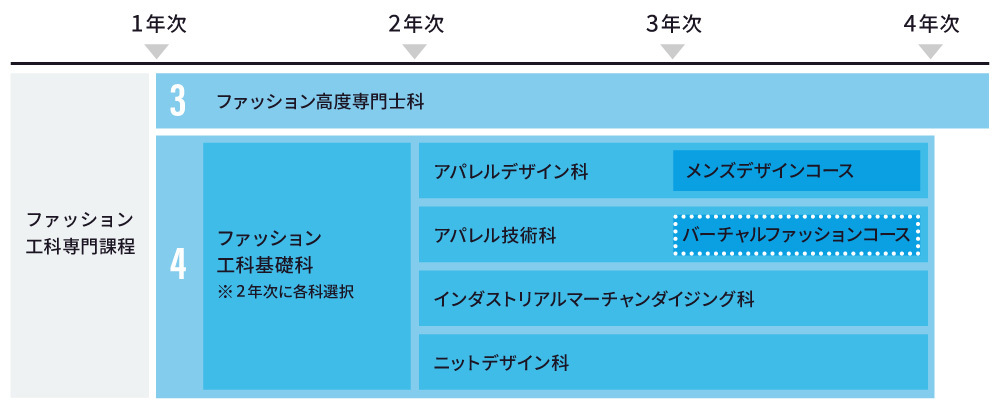
Morioka: That's correct. Professor Tokuoka served as the homeroom teacher for the Virtual Fashion Course for the entire year. SushiPa and I then taught the lectures on Roblox's digital fashion for the second semester, starting in October and lasting about five months. Roblox headquarters provided extensive official support (*3), ranging from planning assistance for the course content and know-how on production tools, to providing the in-game currency Robux necessary for creating and uploading works, and even offering critiques. This time, it wasn't a so-called donation-based course but an official curriculum that counts toward graduation credits, so we felt quite a sense of responsibility.
※3 Roblox Supports Virtual Fashion Design Education at Bunka Fashion College, Japan's Leading Fashion Institute
──Please tell us about the Virtual Fashion Course.
Tokooka: It's an elective course newly established for the 2024 academic year, aiming to cultivate "talent capable of 3D modeling and creating fashion within virtual spaces." After teaching in several departments at Bunka Fashion College, I was appointed as the head of the Virtual Fashion Course.
──We'll discuss the "fashion in virtual spaces" aspect in more detail later. What was the one-year curriculum like?
Tokooka: We primarily taught how to construct garments using a 3D tool called CLO. With CLO, you can design garments within the computer, create 2D patterns, and then simulate in real time how that pattern translates into a three-dimensional garment—all the way to the point where the model is wearing the garment. This allows you to confirm the finished three-dimensional result without going through the process of printing the pattern on paper, cutting fabric for a sample, and sewing the garment.

In the later stages of the digital fashion program, the curriculum extends to migrating the garment data for the Roblox platform and selling it within Roblox. Mr. Morioka and SushiPa taught the classes related to Roblox.
Related Article:Generation Alpha is hooked! The impact of the "immersive social platform" played daily by about 80 million people
Morioka: Ultimately, all 21 students in the first cohort of the course created their own original clothing designs. Simultaneously, they created versions of those clothes for Roblox avatars and also produced gallery spaces to express their worldview.
Regarding terminology, while phrases like "real vs. digital" are common, Gen Z and Alpha—Roblox's primary users—tend to view digital as part of the real world. Therefore, we use the term "physical vs. digital."
Building "My Brand" through both physical clothing and Roblox avatar clothing

──In February 2025, a fashion show was held as the graduation project. What were the students required to submit as the culmination of their year?
Tokooka: The final goal we set for them throughout the year was to decide on their own theme and create "My Brand." For the fashion show, they could model their own clothes or ask others to model, presenting their garments on the runway.
And here's where the digital fashion program element comes in: all 21 students created a "booth" (space) within Roblox aligned with their My Brand theme. They "digitized" the clothes they made, dressed avatars in them, and undertook the initiative of selling them to Roblox users.
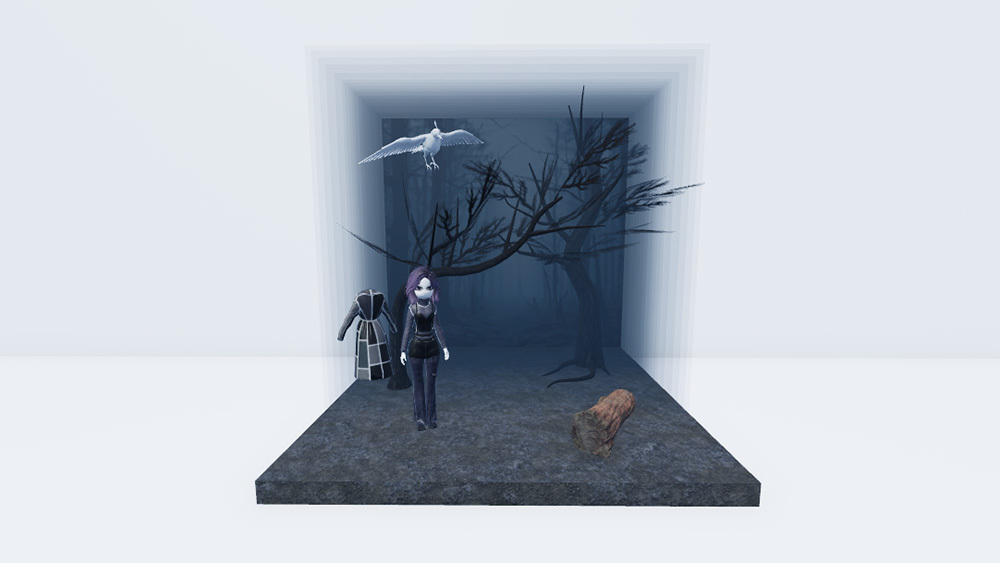
SushiPa: I primarily taught the "Roblox clothing and space creation" part. The workflow was: students first designed clothes using CLO. While sewing physical garments from patterns created in CLO, they simultaneously migrated the same CLO data into Roblox Studio—Roblox's dedicated tool—to transfer the clothes as UGC items. It's like branching from the CLO model into physical and digital paths.
Morioka: However, CLO and Roblox have completely different specifications. CLO is fundamentally designed for sewing physical garments from patterns. The students really struggled with that transition, didn't they?
SushiPa: Roblox requires significant data reduction. Some students had to cut down garments that used millions of polygons in CLO down to just 4,000 polygons for Roblox. But that's where the creativity comes in—trimming meshes in invisible areas, for example. Everyone found it fun. Before we knew it, everyone had mastered the tools, and I was amazed by their ability to absorb it all.
Morioka: This time, we set up a dedicated Discord server. Alongside in-person lectures, it allowed us to share lecture materials and check assignment progress outside class hours. Establishing a system for detailed communication, like addressing students' specific questions, proved highly effective.
──I saw the exhibition on Roblox. Roblox avatars come in various head-to-body ratios and body types, right? Do you prepare clothes for each body type?
SushiPa: In Roblox, if you create one set of clothing data following the specifications, it will fit avatars of any body type. So, in this class, we taught how to create clothing following those specifications.
The digital fashion market is projected to grow to 16 trillion yen by 2030!?
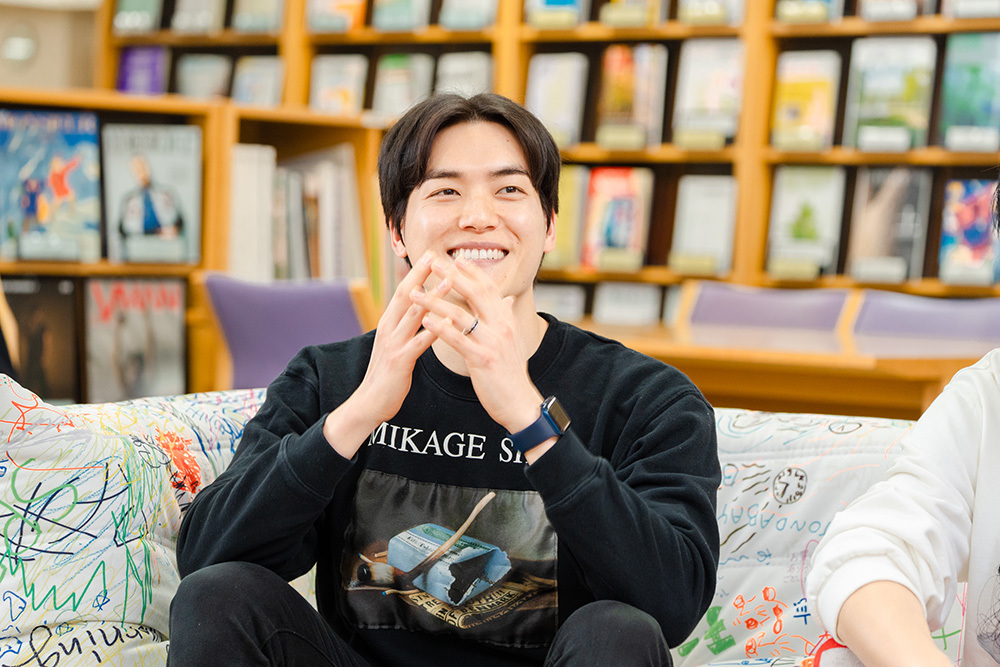
──What is the scale of the digital fashion market as a business?
Morioka: There are various calculation methods, and the definition isn't strictly fixed, but it's said that by 2030, the metaverse market will reach 75 trillion yen, with the digital fashion market within that reaching 16 trillion yen. This represents an extremely high growth rate, and it's gradually attracting attention from the apparel industry as well.
──On Roblox, regular users can create and sell "UGC items"—clothes and accessories for avatars.
SushiPa: Roblox's UGC creators have already established this as a viable profession. While game creators are the largest group selling UGC, there's also a market large enough for avatar and item creators to make a living solely from this.
Morioka: Roblox places significant emphasis on its creator economy. While Roblox's total annual revenue is around ¥540 billion (calculated at ¥150 per dollar), approximately ¥140 billion of that is returned to UGC creators. Official figures indicate the top 10 creators earn an average of roughly ¥4.5 billion annually. The top 100 creators earn around ¥750 million, and even expanding to the top 1,000, creators are said to have an annual income of about ¥100 million.
SushiPa: It's not just users; companies and other entities are also creating and selling virtual spaces and items. GeekOut assists with this, and over 400 companies and brands are entering the platform annually, providing content to Roblox.
──So there's this massive economy like Roblox, and demand for digital fashion is growing, right?
Morioka: According to Roblox reports, 84% of Gen Z draw inspiration from digital fashion for their physical outfits. Many prioritize their avatar's appearance over their own. Roblox users spend an average of 2.5 hours daily on the platform, with 20% of that time dedicated to avatar customization.
SushiPa: For users, the physical and digital worlds are naturally interconnected. Therefore, it aligns with user needs for these two markets to merge rather than remain separate. However, very few creators have formal training in physical fashion design; instead, digital and CG creators are also making fashion items.
Morioka: The impetus for this project was Roblox's 2023 collaboration with Parsons School of Design in New York, launching the world's first joint course. Learning this, I was determined to bring it to Japan and immediately reached out to Bunka Fashion College, Japan's leading fashion school. As this was a first-of-its-kind initiative domestically, we designed the curriculum from scratch and everything was trial and error. Yet, we successfully realized it within a year of the initial concept.
"Ensuring everyone can properly make clothes" is Bunka Fashion College's traditional strength.
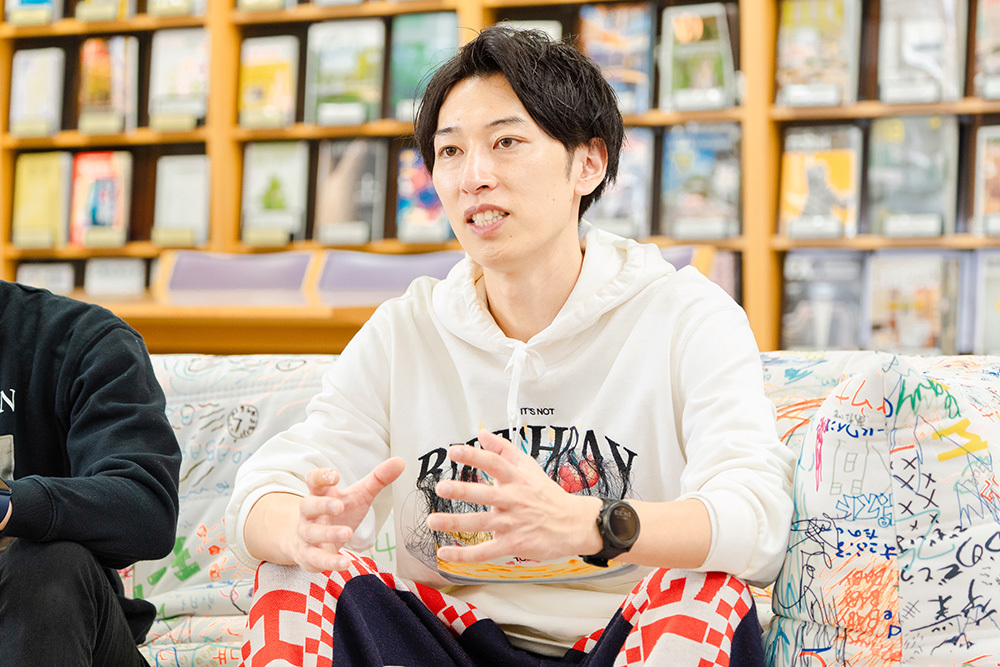
──When Roblox and the Dentsu Group approached you, planning for Bunka Fashion College's Virtual Fashion Course had already begun, right?
Tokooka: By the time they approached us, we had already started developing the course curriculum, so it was really cutting it close (laughs).
Indeed, our Virtual Fashion Course was newly established precisely as the kind of program you both described—one that cultivates the talent needed for the future. We aim to produce graduates who embody the school's traditional ethos of "everyone being able to properly make clothes," while also mastering digital skills. They are expected to spearhead digital transformation (DX) within the apparel industry.
When we say "digital," it encompasses everything from learning to operate and apply 3D modeling software like CLO, to mastering graphics and video using tools like Blender, and even developing real-world "photography" skills.
──You mentioned transferring in during the third year. Had the 21 students not studied digital tools before that?
Tokooka: All students at Bunka learn basic digital tools, but only those in the Virtual Fashion Course master CLO and Blender. Bunka has various departments: Apparel Design, Knit Design, Industrial Merchandising, and Apparel Technology. Students who studied in these departments up to their second year transferred into the Virtual Fashion Course in their third year. They are courageous students who jumped into a completely new world.
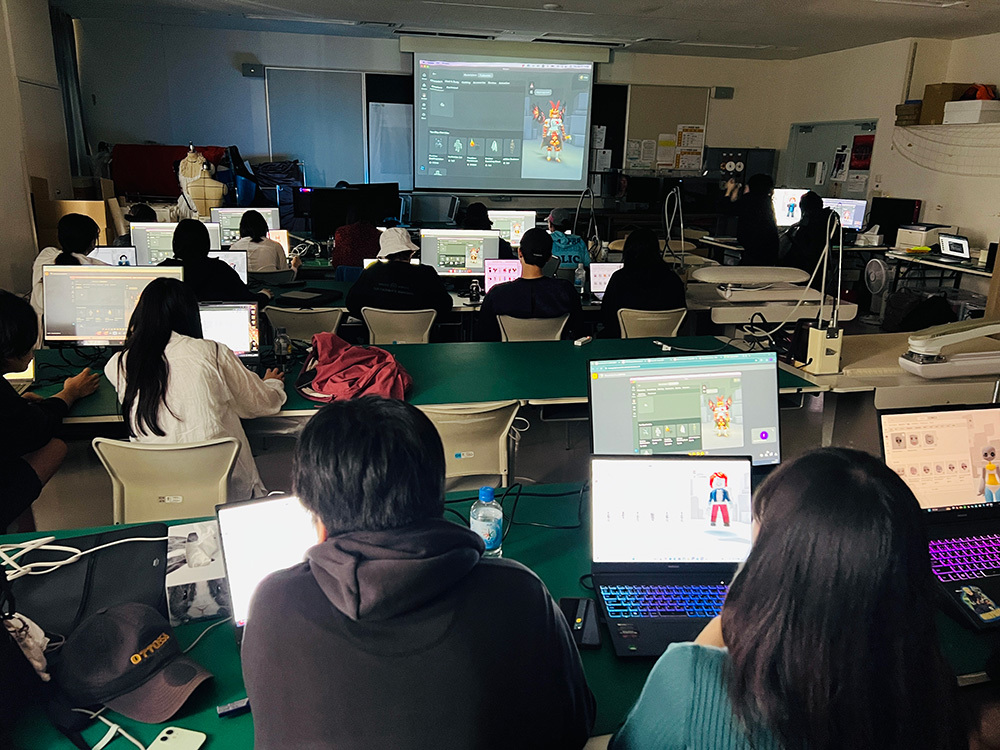
──How do you view the final deliverables?
SushiPa: It was incredible—every single one of them made it all the way to selling their UGC items on Roblox. Following the "My Brand" theme, they created physical clothing, then also made their own UGC items for Roblox, uploaded them, sold them, and even built their own booths in the virtual space.
Morioka: Initially, based on Parsons' track record, we said, "It'll be tough for all 21 to finish this," and "Let's allow for course corrections along the way." But Professor Tokuoka insisted, "No, they can do it. Let's make them do it" (laughs). In reality, everyone tackled the challenge with passion and cleared it, earning high praise from Roblox. Each student powerfully expressed their My Brand worldview, both in the graduation fashion show and their Roblox booths. It was truly moving.

https://www.roblox.com/ja/games/79503413229926/Bunka-Graduation-Fashion-Runway-Class-of-2025
Tokooka: Personally, while teaching the clothing classes, I could predict that "these students probably won't drop out." They had solidly mastered the techniques and mindset for making clothes, so the only remaining challenge was managing the schedule for the digital classes. We focused on building a support system, collaborating with the two of you and instructors like the Blender teacher.
Morioka: Towards the end of the course, when we all uploaded our Roblox UGC items simultaneously, everyone was surprised they started selling right away (laughs). While the quality of the students' work was outstanding, the Roblox economy's ability to instantly sell globally is truly remarkable. The students were thrilled, feeling a huge sense of fulfillment knowing their creations, embodying their own worldviews, instantly reached people worldwide.
The 21 first-year students, the future of digital fashion, and
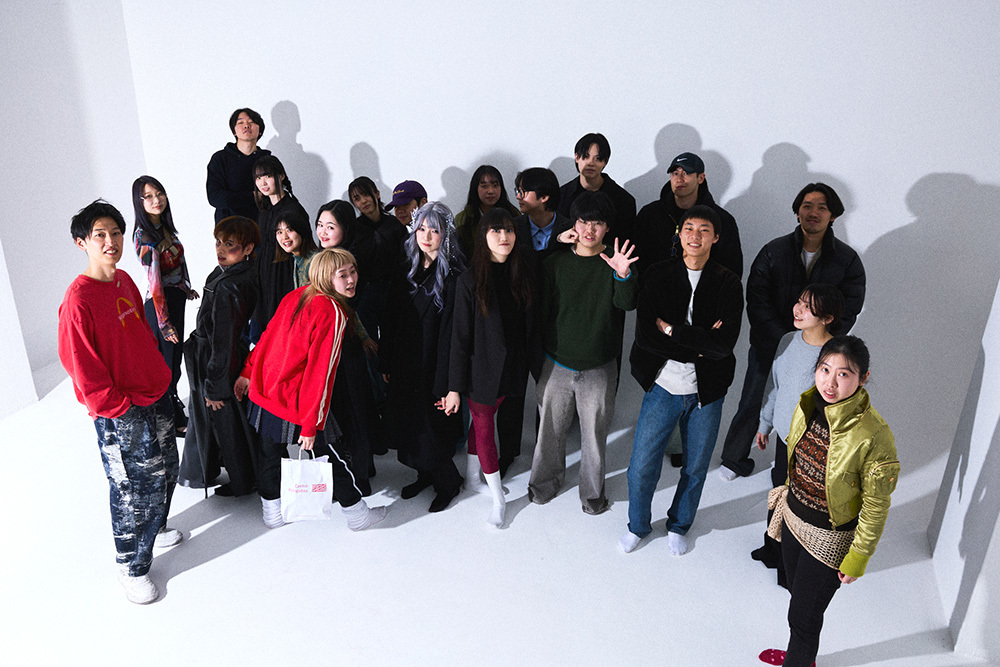
──Now that the 21 first-year students have completed the program, what paths will they pursue next?
Morioka: Many students are indeed heading into careers making physical clothing. However, overseas there are cases where people profit in the inventory-free digital fashion market and then launch physical brands from there, so the future is exciting. All 21 have mastered workflows using CLO and Blender, and some even expressed wanting to continue with virtual fashion after graduation.
SushiPa: One student actually turned down a job offer to start over at a game school this April. And interestingly, one student secured a position at GeekOut as a UGC creator. As my subordinate, or junior colleague (laughs), I plan to have them assist with the 2025 academic year classes right away.
──That's quite a connection...! By the way, are there any role models succeeding in the digital fashion space as a business?
Morioka: For example, there's an American UGC creator named RushX. He's a top creator earning hundreds of millions of yen annually on Roblox, but he's currently a full-time Stanford student focused on his academics. While being a UGC creator, he also does various fashion collaborations and launched a physical fashion brand called "CHRUSH," which is sold at places like Walmart.
──Please share your thoughts on the challenges and prospects you see for this program and the digital fashion industry.
SushiPa: This market is growing at an incredible pace, but talent is polarizing between digital and physical. Especially, as Professor Tokuoka mentioned earlier, people who can "sew clothes themselves" are truly scarce in the digital fashion market.
This time, we've produced rare talent who can do both. It would be fantastic if they could bring the appeal of physical fashion and inspiration that digital-only creators can't conceive to the digital fashion market.
Tokugawa: Thank you! From my perspective, what I hope to see going forward is the need for a market in Japan that can properly monetize as a business. Many companies in the apparel industry are introducing tools like CLO, but implementing such environments is costly. There's a challenge where, despite talking about DX, budgets are actually increasing.
Therefore, if apparel companies and designers enter the digital fashion market and it becomes a new revenue stream, that money could enable all sorts of things. Designers who couldn't pursue their ideas due to budget constraints might even launch their own physical brands.
That's why I want students to better understand that "a market where you can earn digitally already exists." Moving forward, I want to update the curriculum structure to focus on: What kind of market is it? How does the money flow? And what kind of items should we propose for that market?
Personally, I want to develop this course into the top program at Bunka. The second cohort grew even larger than the first, with 24 students advancing. I aim to make it something that draws attention from all Japanese apparel companies and fashion schools, with them saying, "That program at Bunka is amazing."
Morioka: As Professor Tokuoka mentioned, we hope to expand and grow this into an ongoing project with the second and third cohorts. Moving forward, we want to incorporate learning about distribution, promotion, and branding. Additionally, next year, we aim to realize a dedicated "Digital Fashion Runway" on Roblox for the graduation fashion show.
With both physical and digital elements, and students who also model themselves, I hope we can see the emergence of truly versatile talents from Japan—not just dual-skilled, but individuals capable of handling three or four roles simultaneously, becoming super-comprehensive 3D designers. As the Dentsu Group, we also plan to maintain ongoing relationships with graduates, supporting them in various ways—whether through collaborative projects or launching their own original brands.
──I look forward to seeing many "dual-talent" individuals advance onto the global stage. Thank you very much.
Graduation projects showcasing physical & digital fashion are currently on display at the Dentsu Inc. Headquarters entrance!
From April 15 to April 25, 2025, the graduation projects of the first cohort of the Virtual Fashion Course are on display at the Dentsu Inc. Headquarters entrance. During this period, Professor Tokuoka and the second cohort also visited Dentsu Inc. Headquarters as part of their practical training.
Some of the works will cross the ocean and are scheduled to be exhibited at the Roblox Developer Conference in California this September.
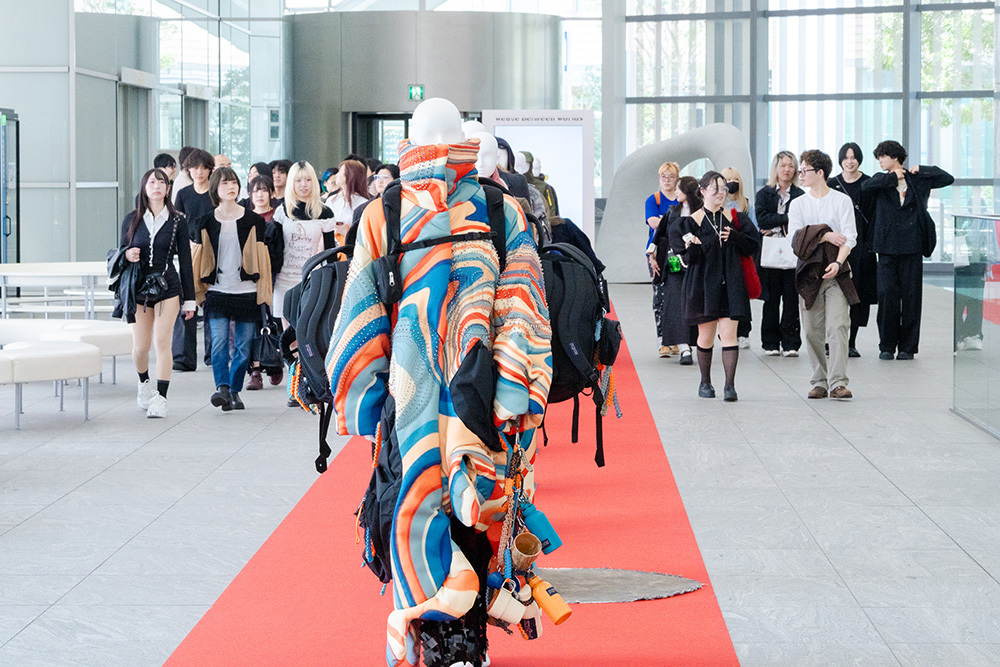
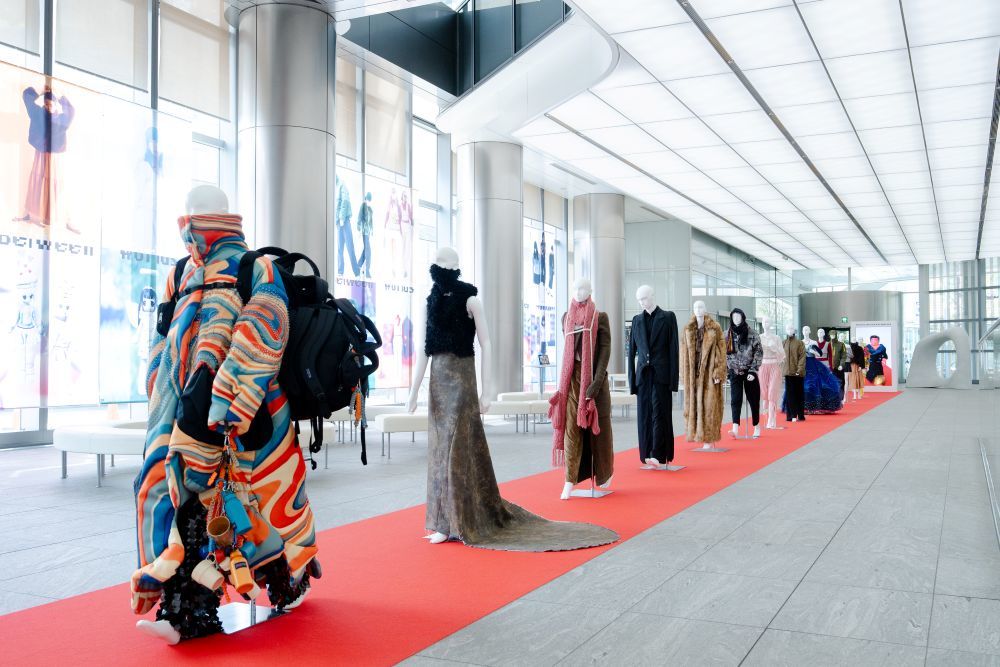
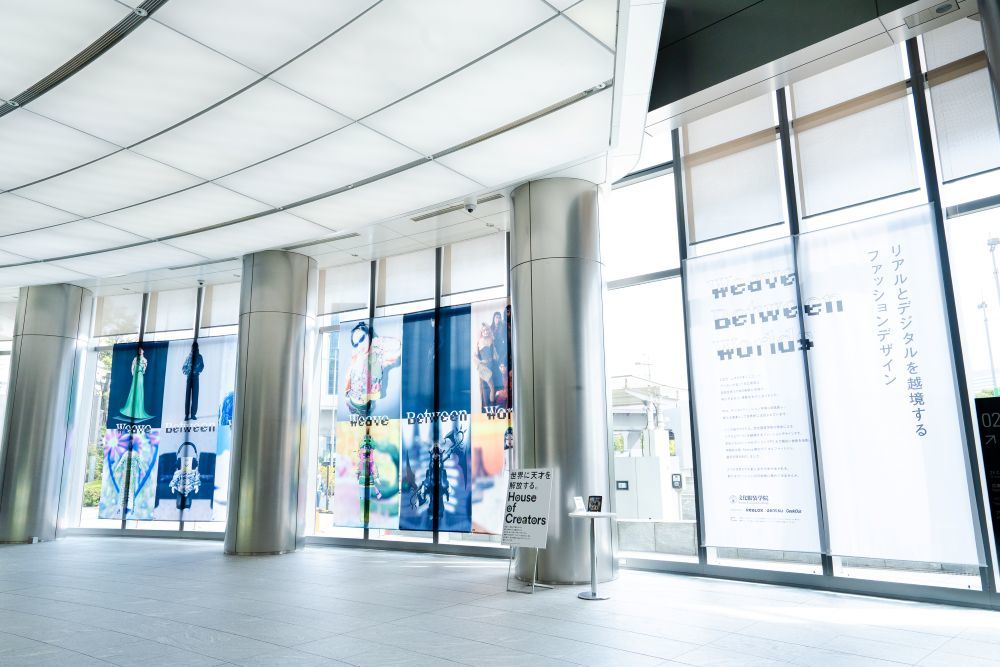
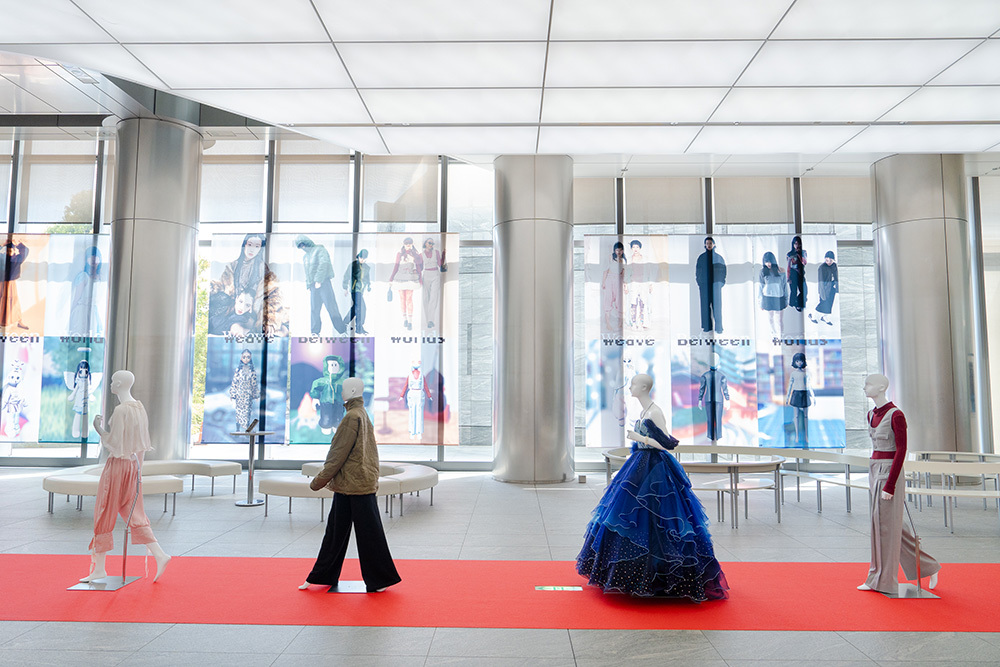
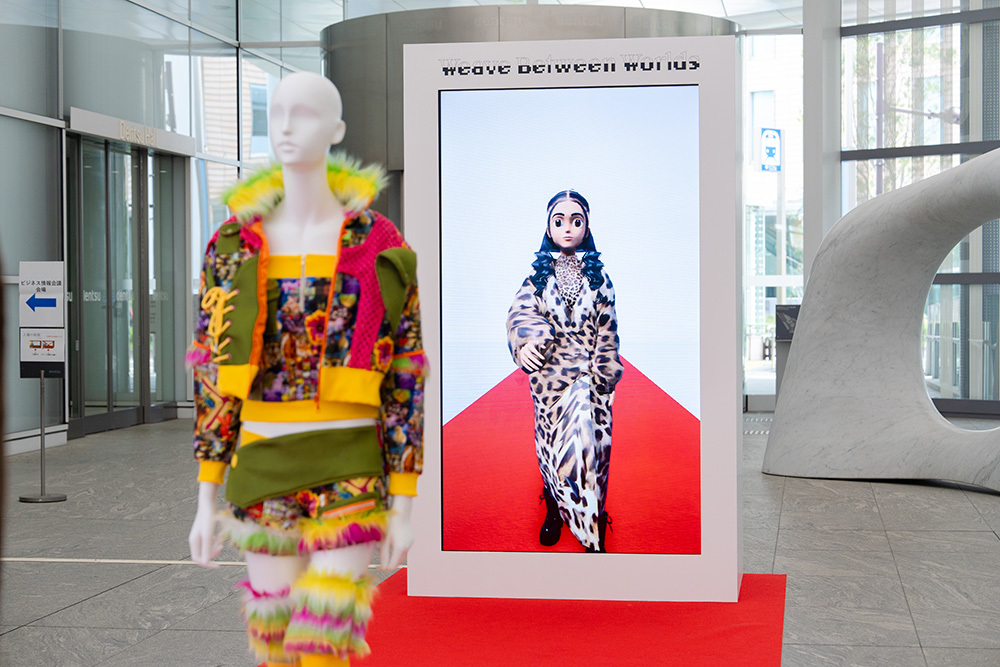
Was this article helpful?
Newsletter registration is here
We select and publish important news every day
For inquiries about this article
Author

SushiPa
GeekOut Inc.
3D CG Artist / Producer
Graduated from Kyoto City University of Arts. After working on character modeling and VFX production at a smartphone game development company, he is currently responsible for planning, production, and direction of Roblox experiences at GeekOut.

Tokooka Satoru
Bunka Fashion College
Full-time Instructor for the Virtual Fashion Course
Graduated from Bunka Fashion College's Apparel Technology Department. Worked as a patternmaker in OEM/ODM before joining the same college. Self-taught in 3D modeling, currently teaches the Virtual Fashion Course newly established in 2024.

Shusuke Morioka
Dentsu Group Inc.
Dentsu Inc. Innovation Initiative
Joined Dentsu Inc. as a new graduate. After being assigned to the New Business Development department, worked as an account executive for major beverage brands before moving to the current department. Currently drives business development and acceleration in the Japanese and Asian markets, including sourcing promising overseas partner companies, investment operations, and alliance building. Primarily responsible for the 3D media and gaming sectors. Winner of the ACC Gold Award.


